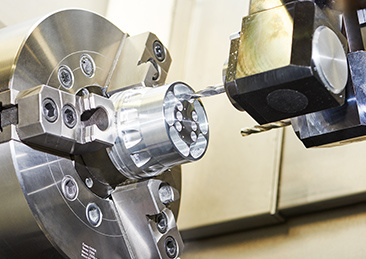A new pattern of "strong supply and weak demand" is forming in the global iron ore market.
Published Time:
2018-08-01
The persistent global oversupply and weak demand in the iron ore market have driven prices to their lowest point in five years, with no signs of a rebound currently visible. The domestic steel market is also experiencing sluggish sales, forcing traders to resort to price reductions to stimulate volume, leading to a widening decline in steel prices.
According to the latest market report from "My Steel," a well-known domestic steel information agency, the domestic spot steel price composite index continued its downward trend last week, closing at 115.98 points, a weekly decline of 1.07%. The continuous decline in steel futures markets has dampened the sentiment of domestic traders, coupled with sluggish sales, causing spot steel prices to continue their overall decline, with price drops widening across major steel product categories. As long as downstream terminal demand fails to recover and market fundamentals remain unchanged, this trend in steel prices is unavoidable.
Analysis indicates that price declines are widening in the construction steel market. In Shanghai and Hangzhou, weekly price drops have exceeded 100 yuan per ton. Market insiders report that the East China market has experienced persistently weak demand due to earlier rainy weather, leading to price drops. Furthermore, with the month's end approaching, some businesses face tighter cash flow, prompting price cuts to accelerate capital recovery, thus further widening the price decline.
Prices also continued to fall in the plate market. The hot-rolled coil market saw a weak decline, with weekly price drops exceeding 100 yuan per ton in Shanghai and Hangzhou. Market confidence has further eroded, resulting in sluggish transactions. Even though overall inventory pressure is not excessive, the weak market tone persists. The medium and thick plate market showed weak consolidation, with weekly price drops of 20 to 80 yuan per ton in Shanghai and Jinan, and 90 to 100 yuan in Beijing and Taiyuan. To date, there are no clear signs of a surge in steel demand.
The global iron ore market is further solidifying its new pattern of oversupply and weak demand. According to the latest report from "Westbound New Express," while prices for iron concentrate in Hebei Province remained generally stable for most of August in the domestic ore market, they began to decline in the latter half of the month, with the downward trend expected to continue. Import ore prices have fallen sharply due to worsening market expectations and weak transactions, creating a strong bearish sentiment. On August 28, the Platts 62% iron ore index closed at $87.25 per ton, down $8 in one month, reaching a new low since the second half of 2009. According to relevant calculations, combining domestic and imported ore, domestic iron ore supply exceeded demand by 52 million tons in the first half of the year. This oversupply is a major factor contributing to the continued decline in import ore prices.
Analysts from relevant institutions point to one positive aspect: according to the latest data from the China Iron and Steel Association (CISA), fixed asset investment in the domestic steel industry in the first half of the year fell by more than 7% year-on-year, the largest decline among 56 sub-sectors in 19 major industries nationwide, indicating a slowdown in the disorderly expansion of the steel industry. However, the immediate reality is that the daily crude steel output of key steel enterprises in mid-August still showed a month-on-month increase, maintaining high steel supply levels. With sluggish market transactions, the continued weak performance of steel prices is inevitable.
Focus
Germany's Industry 4.0 points to intelligent factories
A new pattern of "strong supply and weak demand" is forming in the global iron ore market.
The rise of the industrial robot industry, international giant KUKA may settle in Shunde!
The freight elevator industry is entering an advanced development mode
Congratulations!! Our company is featured on the cover of the Xingxun magazine's Metalworking World







